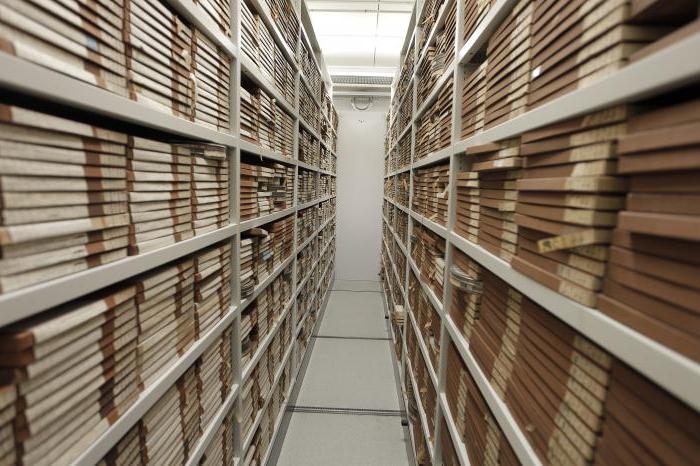On the territory of Russia there is a fairly complex system of standards, which includes acts from the national level to the local level adopted at a particular enterprise. A pile of “pieces of paper” is needed so that both within an individual company and at the state level everything is brought to a single form - this eliminates misunderstandings and different interpretations. The enterprise standard is a mandatory set of rules for any self-respecting company.

What are the standards in modern Russia
The following documents are distinguished:
- national;
- international, specially registered;
- rules, recommendations, standards regulating standardization in the country;
- classifications, data classifiers;
- enterprise standards;
- arches;
- regional;
- preliminary national.
Federal law: what about standards?
The development of the enterprise standard is considered in the first part of Article 11 of Federal Law No. 184, adopted on December 27, 2002. This legal act states that the development, approval - tasks solved by legal entities on their own. Preliminarily, specialists analyze the need for implementing standards at the enterprise, and if its results show the justification for such an action, the preparation and approval mechanism is launched.
According to the Federal Law, the goals may be:
- process improvement;
- dissemination of knowledge;
- application development.
The law also gives legal entities the right to independently establish the order in which the enterprise’s system of standards is adopted, changed, and canceled.

Projects in the spotlight
While the development of the enterprise standard at the project level, the developer has the right to propose this document for consideration by the technical committee. Its experts conduct an examination and draw conclusions on acceptability. The results are used to prepare an official opinion, which, being registered according to the rules of workflow, is sent to the developer.
In the case of a successful result, the standards of the enterprise can become the basis for the formation of a document at the national level. The project is also being worked out here first, which then goes through the approval process. The way the national standard is approved is governed by the second paragraph of Article 16 of the Federal Law No. 184.
Standards: what is it?
Standards of organizations, enterprises are an officially approved list of requirements for the work process and its results. They are developed by employees of the enterprise. The document is valid only at the enterprise where it was adopted. Exception: if two companies work in close cooperation, they can establish an agreement on the mutual distribution of documentation. As a rule, this is usually fixed by a document signed by the heads of firms.

State standards of enterprises and adopted by a particular legal entity must be consistent with each other. When developing it is necessary to consider:
- GOSTs;
- technical regulations;
- internationally valid standards.
If necessary, the company may cancel the previously entered into force document. The responsibility for the quality of the manufactured product, both with current standards and without them, lies entirely with the company. Documents do not have a limited validity period, a specific decision is made by the company that implements them at home. She is entitled at any time to suspend their action or introduce restrictions.
Development Features
Enterprise management standards begin with the opinion of a particular employee on how it should look. Further, other colleagues of the initiator and, finally, the managing staff, finally approving the normative acts, join the process. The main objective of the standard is to bring together the ideas of all staff about what the final product (service) is, what properties it should have and how to achieve it. If it is planned to produce consumer goods, it makes sense to seek help from other companies to expand the information base and give an accurate answer to the question “What does the consumer expect?”.
The standard draws attention to the following components of the production process:
- methods;
- raw materials;
- tools;
- domestic services;
- components of manufactured items;
- internal processes.
The latter include:
- managerial;
- management;
- technical.
Considers in detail the standard of the enterprise GOST R 1.5.

Classification of standards
Please note: in the document you can mention any side of the production process at your discretion, there are no restrictions. This diversity allowed the introduction of classification into species, which, in turn, are divided into categories. Allocate standards:
- technical conditions governing the production, use of the product;
- dimensions, parameters;
- types;
- design features;
- brands, composition of the products from which the goods are made;
- storage, transportation, marking;
- Acceptance
- testing;
- control of measuring equipment;
- use, repair;
- typical technologies.
The state standard of the Russian Federation controls whether the international standard of the enterprise adopted internally is being implemented.
Standard: inside view
Suppose you were holding a brochure with the promising heading “Requirements, Enterprise Standards”. What to expect inside?
As a rule, the content of such a publication is a list of requirements. The main task of each of the conditions indicated in it is to improve the quality of the goods (services) produced by the company. Standards make it easier to follow manufacturing algorithms.

Usually the standards of organizations, enterprises consider the full life cycle of a product, describing the requirements for each of the stages. If different materials and tools are used in the production process, high-quality documentation describes the requirements for the nomenclature of all positions without exception.
Where can I meet the standards?
Which organization uses these formalizing workflow papers? Practice shows - almost everywhere. Significantly simplifies and optimizes the work of the introduction of such documents in:
- SRO;
- associations;
- scientific communities;
- public organizations;
- commercial companies.
In a word, it is impossible to develop a single enterprise standard. Each company will have its own model, since the specifics of companies are too great. Experts recommend in each company to create a document on their own, taking as a basis the current GOST.

A special case
As mentioned above, the documentation does not have to be implemented at the enterprise - there are no strict requirements for this. But there is one case that requires special attention from all employees of the company, from ordinary workers to senior managers. This is an enterprise security standard. Although its implementation is also not mandatory, experts agree that the development of such a document is desirable and increases not only the efficiency of the company, but, more importantly, the level of security.
Security is different:
- labor;
- informational;
- industrial;
- economic.

For each category, it is necessary to develop a unique document that fully reflects its features.The implementation and compliance with such acts will allow you to work efficiently without fear of leakage of commercial and production secrets, industrial injuries, technological disasters, crisis and other difficult situations.
Do laws regulate standards?
Technical regulation in our country is enshrined in federal law. It states that the company has the right to develop its own technical and regulatory documents, which will replace:
- SanPiN;
- SNiP;
- GOST.
This is not only a standard of the enterprise, but also technical regulations.
The task of creating a normative act lies with some employee (department), and the result of his work will be the property of the company. This means that the use of such a product of intellectual labor for other companies is unacceptable.
The 184th Federal Law allows companies operating on the territory of Russia, at their discretion, determine the procedure for creating documentation. If at the conclusion of the contract, contract to put a reference to the document, the standard will have to be taken into account not only within the company, but also other objects of economic activity.
Development order
Briefly, the process of creating a standard can be described in the following steps:
- check in;
- matching;
- statement.
It all starts with the preparation of a plan that reflects how, within the organization, new and previously approved documentation will be developed. The following people take part in the work process:
- author;
- Colleagues;
- department heads;
- director of company.

Stages of development:
- project formation;
- registration of the standard;
- coordination with the full list of stakeholders, including initial mailing, receiving feedback, updating the document, secondary mailing (the cycle is repeated until a high-quality result is achieved);
- obtaining visas on the final project with an approval sheet;
- approval by the head of the enterprise.
Project: development stages
The enterprise standard is first prepared in the form of a project. The process to be standardized is determined, and the author step-by-step describes how it is implemented in the company at present. Next, the document is transferred to the assistant manager, where it is registered in the internal document management system. The document receives a unique cipher, and after approval it will be included in the list of valid documents. The assistant manager will be responsible for the standard registration process.
For the correct registration, the enterprise standard receives a unique designation. It reflects:
- index ("STO");
- company index;
- serial number received during registration;
- serial number of the current version;
- year of approval in 4-digit format.
For standards, the company introduces a separate numbering, and each next gets the next number after the previous one, without omissions. To simplify the control, a logbook is introduced. If in the future a standard is canceled, the number is retained; assigning it to another document is unacceptable.
Project approval
The list of persons approving the document is formed by the author of the standard or by the person who is entrusted with making changes to the already existing document. As soon as the first edition is ready, a copy is sent to each addressee for study. In modern companies, they use computer equipment for this - for "draft" options, a printed version is not necessary. If the organization has a position of “Director of Legal Affairs”, he is the most important person in the list of coordinators.

When the documentation receives a unique number, the project can be sent to the heads of departments. Each of them has the right to prepare proposals, comments, in a timely manner (up to three business days) sent to the author of the standard.If a department does not respond on time, the specialist responsible for the standard contacts the department head and informs his immediate supervisor or the head of the department that initiated the creation of the document.
Further, the author analyzes the corrections received and makes changes. If a specialist believes that the proposals are incorrect, they turn to a higher rank (Director of Legal Affairs), who decides whether to make changes or not. When the changes are completed, the new version is again sent to agree on the previous list of addresses. The author receives the initial approval electronically, after which he prepares a draft order on the preparation of a new act for implementation and approves the draft in paper form. When interested parties have officially expressed their approval, you can send a new standard for signature to the head of the company.
Standard requirements
In order to correctly generate and accept documentation at the enterprise, you must first approve the "Methodology for building standards." Another regulatory document that will simplify the formation and approval of the acts sought is the “Rules for the Design of Standards”. By registering such once and confirming it with the head, the company speeds up the formation of individual standards and reduces the need for corrections and the risk of conflicts when one employee has one vision of paperwork and another has another, which can provoke a wave of memos and a delay .

Correct workflow involves standardization of registration of developed projects and approved documents. For this, it is convenient to keep a special journal. Forms can be bought ready-made in stationery stores, or you can draw up by hand in a regular notebook. If the company is characterized by an abundance of standards, an additional journal can be entered to account for those documents that are being checked.
Important Nuances
The standard term for approving a draft document is three business days.
The standard term for approving amendments to the standard is three business days.
In order for the standard to be taken into account in the work of the company, it must be put into effect by issuing an internal order and familiarizing all interested parties with it.
The author of the standard is preparing a draft order on activities related to the introduction of the standard.
Standards: storage rules
If the company has established paperwork on paper, then by order of the company appoint a person responsible for the storage of standards. He is charged with providing:
- conditions for long-term storage of securities without causing damage to them;
- the availability of documentation in places designated for its storage.
Storage conditions include:
- Places a limited number of people have access to;
- adequate atmospheric conditions (humidity up to 80%, temperature 15-25 ° C, no harmful factors).
Storage standards include in the duties of the following persons:
- document author;
- department head;
- person designated as responsible.
Storage Order:
- the approved original document is transferred to the manager responsible for legal issues;
- the employee appointed by the person responsible for the storage of documents makes a note “Control copy” on the title page;
- the original is filed in the archive, included in the registry;
- department heads who receive copies of documentation in their hands file them in folders stored in their units.

And if you need to remove?
The withdrawal of the expired standard is made on the basis of a special order issued by the enterprise. To do this, they convene a meeting, record it and form a draft order. The meeting should be attended by the heads of all departments in which the standard was applied. The author of the standard is appointed responsible for organizing the event.He also prepares a draft order and approves it with interested officials, and then passes it along with the approval sheet to the first person of the company for signature. All changes regarding the standard are entered into the logbook.